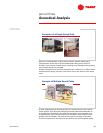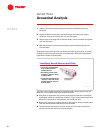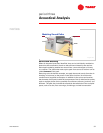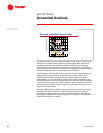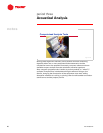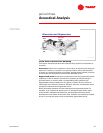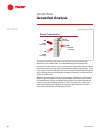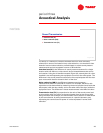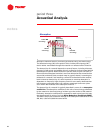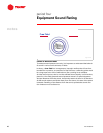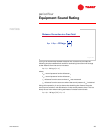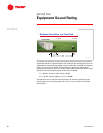
TRG-TRC007-EN 43
period three
Acoustical Analysis
notes
The ability of a material to reduce transmitted sound is most commonly
referred to in terms of its insertion loss, noise reduction, or transmission loss.
Insertion loss and noise reduction are both based on actual sound-pressure
measurements and are expressed in terms of dB reduction.
Insertion loss (IL) is the difference in sound pressure measured in a single
location with and without a noise-control device located between the source
and receiver. Using the air-handler example (Figure 42), assume there is a door
installed in the wall separating the equipment room from the office space. The
difference in the sound pressure measured in the occupied space with the door
open versus with the door closed is the IL of the door.
Noise reduction (NR) is the difference between sound-pressure
measurements taken on each side of a barrier. For example, the NR for this
same door can be determined by measuring the sound-pressure level inside the
office space, with the door closed, and on the other side of the door inside the
equipment room. The difference in these measurements is the NR of the door.
Transmission loss (TL) is proportional to the ratio of the sound-power level
on the receiver side of a barrier to the sound-power level on the source side.
Using the same door example, the transmission loss of the door is determined
by the manufacturer by taking measurements in a special laboratory and
expressing the results as sound power. It is also expressed in terms of dB
reduction.
Sound Transmission
I Insertion loss (IL)
I Noise reduction (NR)
I Transmission loss (TL)
Figure 48



